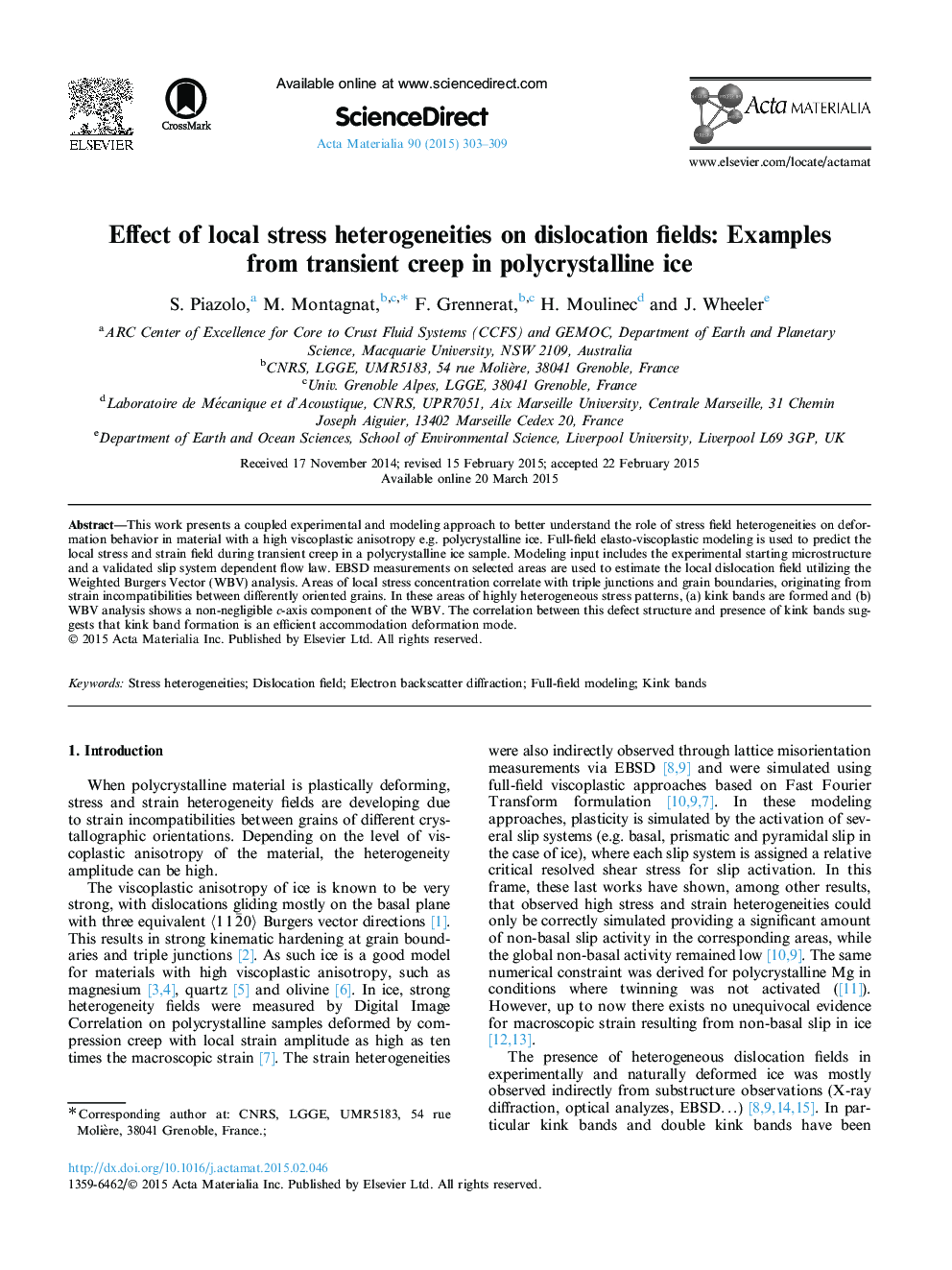| Article ID | Journal | Published Year | Pages | File Type |
|---|---|---|---|---|
| 7880428 | Acta Materialia | 2015 | 7 Pages |
Abstract
This work presents a coupled experimental and modeling approach to better understand the role of stress field heterogeneities on deformation behavior in material with a high viscoplastic anisotropy e.g. polycrystalline ice. Full-field elasto-viscoplastic modeling is used to predict the local stress and strain field during transient creep in a polycrystalline ice sample. Modeling input includes the experimental starting microstructure and a validated slip system dependent flow law. EBSD measurements on selected areas are used to estimate the local dislocation field utilizing the Weighted Burgers Vector (WBV) analysis. Areas of local stress concentration correlate with triple junctions and grain boundaries, originating from strain incompatibilities between differently oriented grains. In these areas of highly heterogeneous stress patterns, (a) kink bands are formed and (b) WBV analysis shows a non-negligible c-axis component of the WBV. The correlation between this defect structure and presence of kink bands suggests that kink band formation is an efficient accommodation deformation mode.
Related Topics
Physical Sciences and Engineering
Materials Science
Ceramics and Composites
Authors
S. Piazolo, M. Montagnat, F. Grennerat, H. Moulinec, J. Wheeler,
